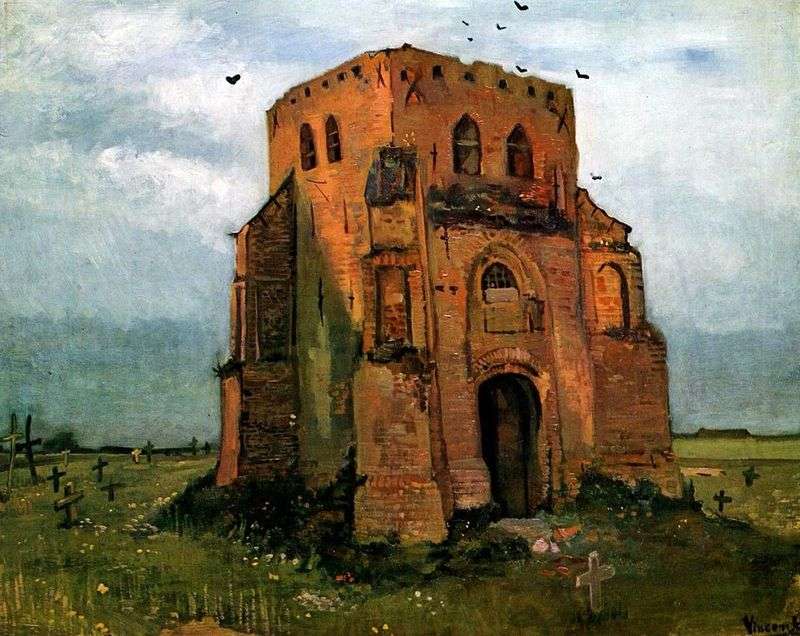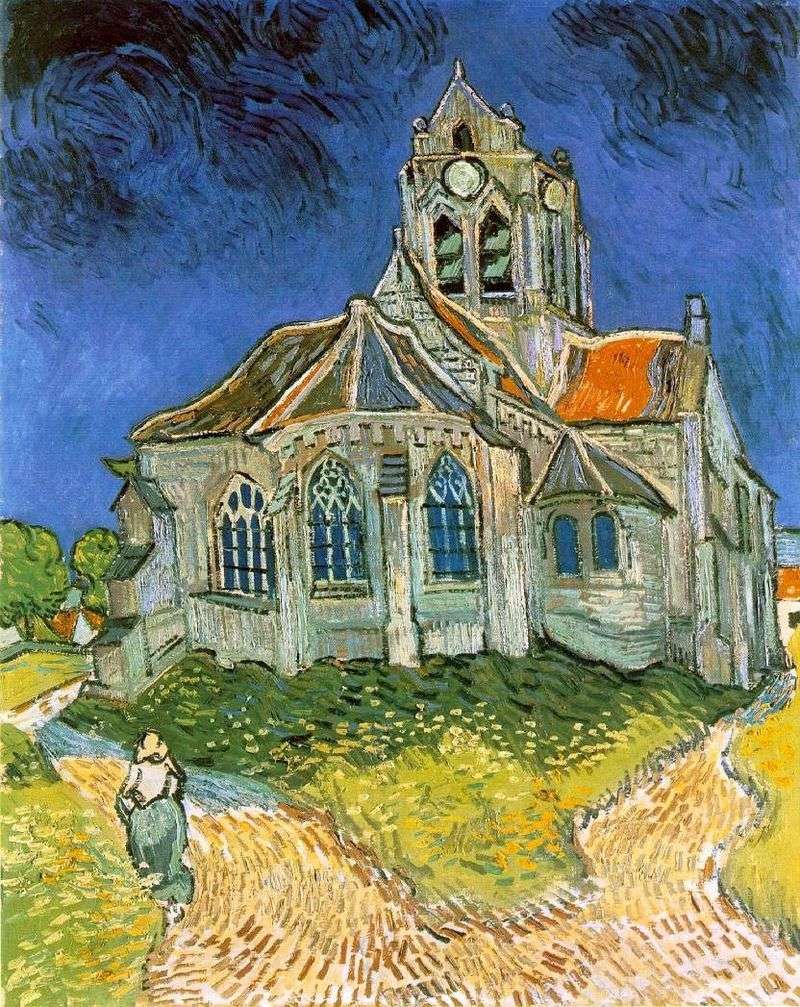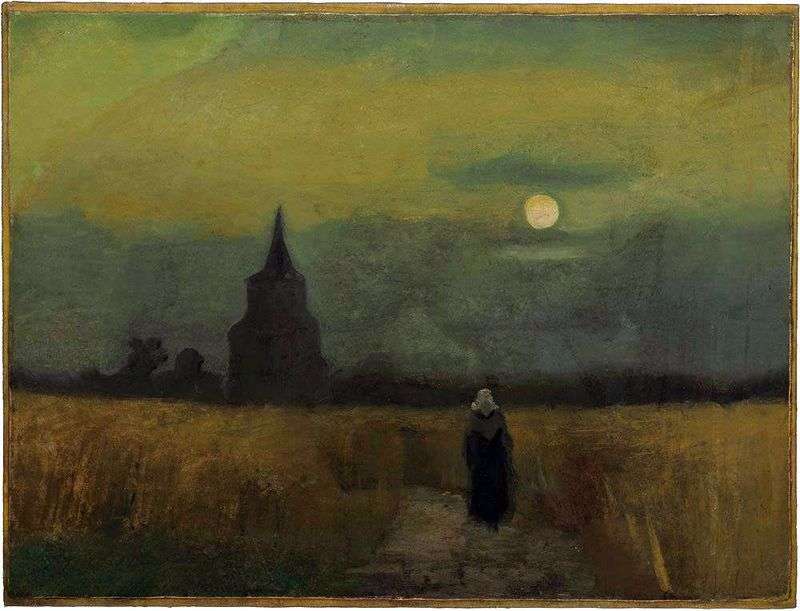
In 1882, Van Gogh’s father was appointed pastor in Nyuen. Soon his whole family moved there, including Vincent. Relations with the artist’s parents were very difficult.
Two years later, with Van Gogh’s mother, an accident occurred, as a result of which she injured her thigh. Vincent and his sister took care of her, and the relationship between mother and son began to improve. To make her a gift, Van Gogh began work on the painting, which was completely completed in 1885.
In the picture, the influence of the classical school is still very noticeable. A strictly limited color scheme is built on a combination of different shades of ocher. Deep black shadows, dull, lifeless colors create an atmosphere of tension and depression.
The black roof of the church is the compositional dominant of the painting. On it there is absolutely no reflection of the blue, clear and seemingly alien canvas of the sky. Figures of people, such small against the backdrop of a majestic church, are written with careless strokes of dark colors. Their faces are omitted, which further exacerbates the general mood.
Perhaps the bright sky personified Vincent’s hopes for a better future, and, depicting the branches of trees with the last foliage against his background, the artist sought to convey the lyrical mood of late autumn. But everything that is under the sky, remained an enveloped atmosphere of depression and cold.
 Parish Priest’s House in Nyuenen by Vincent Van Gogh
Parish Priest’s House in Nyuenen by Vincent Van Gogh Old church tower in Nuenen (Peasant Cemetery) by Vincent Van Gogh
Old church tower in Nuenen (Peasant Cemetery) by Vincent Van Gogh Church in the Over by Vincent Van Gogh
Church in the Over by Vincent Van Gogh Wooden sheds by Vincent Van Gogh
Wooden sheds by Vincent Van Gogh View of the Over and the Church by Vincent Van Gogh
View of the Over and the Church by Vincent Van Gogh Fields of tulips by Vincent Van Gogh
Fields of tulips by Vincent Van Gogh Portrait of a Woman by Vincent Van Gogh
Portrait of a Woman by Vincent Van Gogh The old tower among the fields by Vincent Van Gogh
The old tower among the fields by Vincent Van Gogh